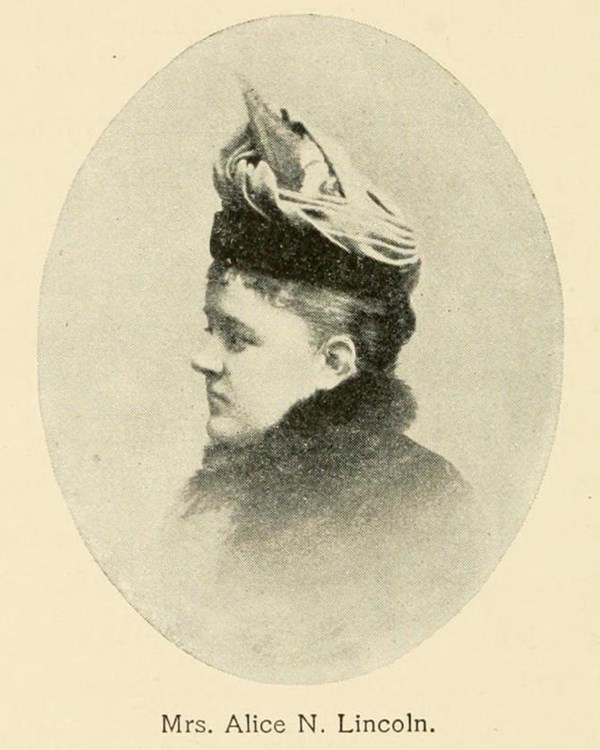Last updated: January 15, 2025
Person
Alice North Lincoln

Library of Congress
Born in Philadelphia on November 13, 1853, Alice North Towne Lincoln came from a prosperous family with ties to the Boston area. Lincoln moved to Boston to attend the School for Social Workers to follow her interests in social welfare.
In the years that followed her move, Lincoln worked tirelessly for the urban poor in Boston.
She spent decades advocating for a variety of causes. The Boston Sunday Post described her in 1903 as:
… Not an aggressive, 20th century strong-minded woman, but a woman of the old school, who, by her wonderful personality, and long headed-advice, wins people to her cause…1
Her first advocacy project in Boston involved the improvement of a 27-unit tenement building in the North End. Lincoln had a way of treating those labeled as "unfortunates" by Boston residents like real people. By the end of the first year, not only had they turned a profit on their investment, they filled every tenement, and turned a building with the worst moral reputation in the area, to a home known in the neighborhood as the "Good Luck House." Lincoln continued to work and advocate for underserved people. Active in a long list of organizations, she is perhaps most well-known for hospital reform on the islands.2
She first became involved with the islands in 1887, after a tenant had been sent to Long Island and could not pay rent. Another tenant had gone to Rainsford Island treatment after finding a lump in her breast. The woman, unable to leave her baby unattended, brought the baby with her. The hospital expected her to cook and clean for the baby, even though the lump partly incapacitated her. She only stayed three weeks, but during that time her baby fell ill and died. When Lincoln first visited Rainsford, she saw the mistreatment of more than 300 inmates and patients, mostly elderly women. With terrible conditions, with inadequate staff to patient ratios, little resources, and lack of staff training, Lincoln knew something had to be done.3
Lincoln sent requests to the Commissioners of Public Institutions that ran the hospitals. She raised money and sent rocking chairs for every elderly patient, advocated for the transfer of paupers to Long Island, and demanded a hearing to discuss the continued abuse of those residing on Long Island. Over the course of nine months, 58 hearings took place "throw what light we can upon a very dark spot in Boston." By the end of 1894, Rainsford Island closed as a hospital and the pauper women removed to Long Island.4
Her victory on Rainsford did not conclude her fight. In 1895, Lincoln moved on to advocate for prison reform and fought to improve housing on Long Island. After many public hearings, a bill passed which required all nurses to be registered, and separated the Department of Corrections from the Department of Public Charities. Prison labor ended on the island in 1897, and finally prisoners and paupers had separate housing. Lincoln routinely lent her expertise and passion to rectifying social issues in Boston for decades. In a speech given to the State Federation of Women’s Clubs in 1895, Lincoln concluded "It is not by any general principles that charity can be taught. It is by that love of man for men, which as our own Bishop Brooks has told us 'Is fast becoming a passion of the human race.'" Lincoln lived in Boston until her death in 1926.5
Footnotes
-
William McEvoy, Alice North Towne Lincoln: Boston's Selfless Advocate for the Poor (Independently published, 2020), 8-16, Alice Lincoln Towne North .
-
McEvoy, 12-13.
-
McEvoy, 36,37.
-
McEvoy,43-53.
-
McEvoy, 4-7, 55-56.
